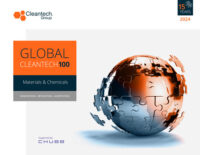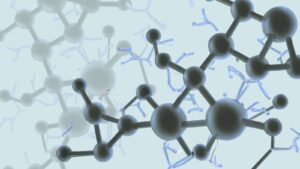Where Plastic Recycling Innovation is Today
Plastic production is expected to double by 2050. Similarly, plastic emissions from production and disposal are expected to double by 2060. Plastic recycling can tackle both production and disposal related emissions by recirculating plastic, reducing the need for virgin plastic production and polluting disposal methods.
The industry standard, mechanical recycling, is incredibly energy efficient and widespread, but has several key shortcomings. Mechanical recycling is feedstock-specific, requiring expensive sorting (only accepting PET, HDPE, PP, LDPE in most cases), experiences frequent failure due to contamination, and produces low value products.
Advanced recycling, a set of physicochemical reactions used to break down or extract polymers from plastic, emerged to increase the value of recycling and reduce need for sorting. The advanced recycling market has grown rapidly in the last five years, resolving some of mechanical recycling’s technical gaps and falling short in others.
Plastic Recycling Innovations
The three primary technologies in advanced recycling (excluding gasification and cracking) include pyrolysis, depolymerization, and solvent dissolution. Each type has specific strengths and areas for innovation to improve efficiency:
- Pyrolysis: Thermal process used to decompose plastic’s chemical chains into various lengths of hydrocarbons to be refined into plastic or fuel. The process also produces syngas and char to be commodified as byproducts or fuels. Several forms of pyrolysis exist, complicating a clear technological definition and technology readiness level. That said, catalytic pyrolysis appears best positioned to emerge as a commercially viable process with both plastic and fuel as potential products.
- Depolymerization: Several processes fall under this category. They generally utilize an intermediary chemical reaction to breakdown PET polymers into monomers to be repolymerized into plastic and textiles. Increasing technical specificity improves material recovery and process efficiency such as Jeplan’s glycolysis or Carbios’ biocatalysis. Current experiments focus on keeping polymer chains more intact than monomers to explore new chemical offtake markets and reduce repolymerization energy costs.
- Solvent Dissolution: By applying specific chemical solvents to plastic waste, recyclers can extract targeted polymers, remove contaminants like adhesives, or recycle currently unrecyclable waste like electronic waste (WEEE). The primary innovation here compliments a key market: packaging plastic. Utilizing decision-making algorithms and solvent-targeted recovery and precipitation, or STRAP, recyclers can extract several layers of pure polymers in packaging plastic (approximately 44% of all annual plastic production).
Of these technologies, assuming proper process management, the energy requirement and negative environmental impacts are (from most intensive to least): pyrolysis, depolymerization, and solvent dissolution. Despite this, solvent dissolution remains the least commercialized technology while pyrolysis and depolymerization have rapidly commercialized.
Pyrolysis produces fuel-grade hydrocarbons after refining, slotting nicely into oil and gas production. Similarly, depolymerization is the only commercially viable means to recycle food grade PET, carving out a specific niche in the food and beverage industry. One reason for solvent dissolution’s slow progress is the need to recover solvents after their use. Without this, the recycling technique is not profitable.
Plastic Recycling Innovator Spotlight
- Macrocycle is a novel chemical recycler using elements of both solvent dissolution and depolymerization for plastic upcycling. They preserve maximum value while reducing energy requirements by retaining chemical structures. The company entered the PET plastic bottle textile market to establish a market foothold while exploring staple upcycled products.
- Plastic Energy is a microwave pyrolysis recycler focusing on PE and PP to plastic and fuel pathways. The company established a firm foothold in Europe with several oil and gas giants as offtake partners before now coordinating U.S. and Asian facilities.
- Jeplan is a PET depolymerization company specifically using glycolysis to recycle PET from plastic bottles and textiles. They currently dominate the Asian depolymerization market and have decided not to expand new facilities outside of Asia, instead opting to license their depolymerization technology and extraction technology commodifying waste textiles to European and American recyclers.
Plastic Recycling Trends and Long-Term Outlook
In terms of economics, plastic recycling is more expensive than virgin plastic production. This trend is occasionally bucked by certain plastics like PET when oil supplies are more restricted. Generally, though, PET depolymerization and mechanical recycling has achieved an average of 10% cost premium relative to virgin plastic. The PET model will be closely emulated by solvent dissolution as it strides toward commercial maturity.
One potential avenue for both depolymerization and solvent dissolution is pairing with mechanical recycling. Solvent dissolution can be used to remove contaminants from mechanically recycled plastic, lowering malfunctions and increasing plastic purity. It can also be used as a post treatment to extract target polymers from pelletized mixed plastic. Similarly, depolymerization can treat the PET side streams from mechanical recycling in order to maximize PET extraction, improving profitability.
Pyrolysis will dominate advanced recycling for the next decade at a minimum. While energy-inefficient to produce recycled plastic, pyrolysis is the only solution that can be deployed today to recycle plastic; mechanical recycling cannot. For that reason, pyrolysis should be considered a transition technology for plastic recycling. Interestingly, oil and gas corporates are the primary drivers of increasing pyrolysis capacity and are expected to utilize most pyrolysis oil as a fuel replacement.
The plastic recycling industry has attracted several other interesting sectors, too. Chemical manufacturers like LyondellBasell and SK spread investments over mechanical recycling, pyrolysis, depolymerization, and solvent dissolution, signaling an interest in the diverse end products from each process. Consumer packaging companies like Coca-Cola and Nestle tend to invest in depolymerization and solvent dissolution for their direct fit in packaging recycling. Finally, waste management titans like Republic Services and WM have quietly built regional recycling hubs, bypassing recyclers and capitalizing on their monopolized access to waste.
Ultimately, each process has significant drawbacks either today or moving forward. That said, solvent dissolution, mechanical recycling, and depolymerization have clear environmental benefits to reduce plastic-related pollution and complimentary commercial potential alongside one other.



